Functional Training is all the rage right now, but do you even know what “functional training” means?
While Functional Training is now being used to describe way too many different crazy fads, including doing ridiculous balance moves on yoga balls and Bosus, what it should mean is training that makes our bodies and minds stronger so we can function better in every day life.
What Functional Training should be is training that replicates movements we do in everyday life to help us develop balance and improve our stability and mobility so that we can move better and more efficiently without injury.
Functional Training is training that uses compound exercises and moves your body in every plane of motion.
Below are 10 Functional Training Leg Exercises to help you move better in every day life by correcting your imbalance and improving your mobility and stability in every plane of motion.
10 Functional Training Leg Exercises
These Functional Training Leg Exercises will get your glutes activated and open your hips to improve your movement patterns after sitting all day at a desk. They will also help you develop mobility and strength in every plane of motion since we move in every direction in every day life.
All too often at the gym we only lift in the Sagittal Plane, spending all our time on Barbell Squats and Deadlifts. And while both are great functional movements, they don’t do all that much to correct our imbalances or improve our balance, mobility and strength in every direction.
These 10 Moves should be included in your workouts to help you develop functional strength.
Lunge Matrix – The Lunge Matrix is a must-do move no matter your fitness level if you want to move better in every day life, lift more, run faster and remain injury-free.
The Lunge Matrix is a series of lunges that move you in every direction to improve your mobility, open up your hips while also strengthening your legs through a full range of motion.
In everyday life, we move in every direction. And if our bodies aren’t strong through a full range of motion, we risk injury when we suddenly step at an angle we haven’t trained chasing after children or grandchildren or while playing a sport.
Therefore it is important to include lunges from the Lunge Matrix, if not the complete series in our workouts.
You can do all 7 lunges as a series or you can break the Lunge Matrix down and include 1, 2 or even 3 lunges as a sequence in your workout.
For all 7 Lunges, check out this post on the Lunge Matrix.
Two great 2 lunge sequences from the Lunge Matrix you can include in your workouts are the Backward Rotational to Forward Cross Lunge and the Curtsy to Front Angled Lunge.
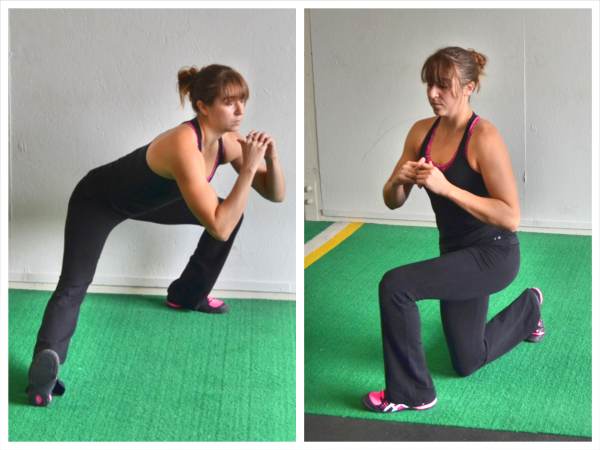
- Backward Rotational to Forward Cross Lunge – This move is two lunges, one opening back and the other lunging forward and across. One rep is both the open back lunge and the front cross lunge. For the backward lunge, you will lunge toward “7″ on the clock with your left foot. Your left foot, when you step back, will be perpendicular to your right foot, which is pointing toward “12.” Push your butt back and sink into a lunge, bending the left knee while keeping the right leg straight. Do not let the left heel come up. Keep your chest up and sit your butt backward. Driving off your left heel, push back to standing. Make sure that your right toe doesn’t rotate but continues to point toward “12.” Also make sure your right leg does not bend.Once you push back to standing, you are going to take your left foot and step forward and across. Beginners will need to pause between lunges while more advanced exercisers will go right from one to the other. For the front cross lunge, lunge forward and across toward about “2″ on the clock with your left foot. Pivot your left foot so that your feet are perpendicular. Sink down into a lunge, bending both knees. Make sure your left heel stays down as you lunge. Then drive off your left heel to come back to standing and repeat going into the backward rotational lunge. Front load, holding a weight at your chest to advance the move.
- Curtsy to Front Angled Lunge – Start standing tall with your feet together. Then, starting with the left foot moving, step the left foot across and behind the right leg. Step back toward about “5” on the clock. Do not step too close to the right so that you have space to sink down into a deep lunge. Drop the back knee toward the ground, keeping the front heel on the ground. You should feel the lunge in the outside of your front butt cheek. Then bring the left foot back forward and stand up nice and tall. Beginners will want to pause here while more advanced exercisers will want to go right from the curtsy lunge to the angled front lunge. Step the left foot forward out of the curtsy lunge into a front angled lunge. Move the left foot forward and out to about “11” on the clock. Both toes should be pointing straight ahead as you bend both knees and sink down toward the ground. Keep your front heel down as you lunge down. Then drive off the front heel to come back to standing. Then go right from the angled lunge back into the curtsy lunge.

To advance any of the lunges, you can add in arm drivers, change up the tempo or add weight. Before you do any of that though, first try to complete a full range of motion.
Beginners may not be able to lunge as low as advanced exercisers. The lower you sink in the lunges with good form, the harder the lunges will be.
Side To Side Lunge – The Side to Side Lunge is a great way to develop strength and mobility in the frontal plane of motion. This move will help you develop core and leg strength, especially adductor strength, while also improving your hip, adductor and ankle mobility.
If you want to correct knee valgus and strengthen your core, legs and glutes to prevent low back, knee and hip pain, you need to include the Side to Side Lunge in your workout routine.
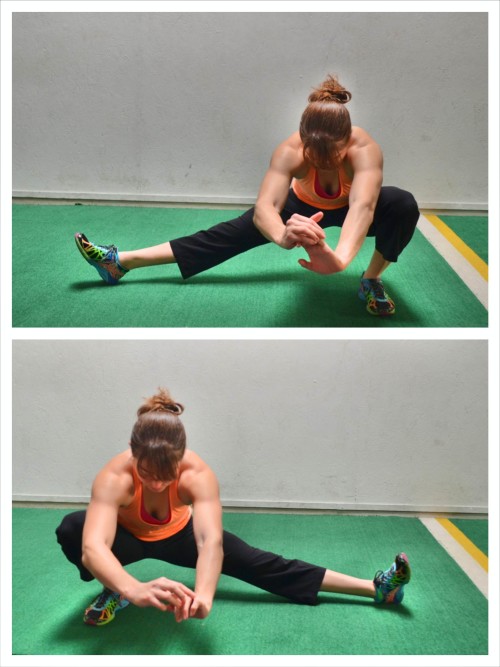
To do the Side to Side Lunge, stand with your feet nice and wide apart as if you are going to do a Side Lunge (feet will be wider than shoulder-width). Shift your weight to one side, bending that knee and sinking down into a side lunge as you rotate the toe of your straight leg up toward the ceiling.
Sink as low to the side as you can, dropping your butt down to the ground while keeping your heel on the ground. You will feel like you are sinking into a deep single leg squat on one side as your other legs stays out straight with the toe up.
Then push back up out of the squat and come back center with both legs straight. Then shift to a squat on the other side, sitting down as low as you can while keeping your heels down and the other leg straight.
Beginners may not be able to sink as low in the squat. Do not try to sink lower by squatting down and letting your heel come up. Sink only as low as you can while keeping your heels down.
Also, beginners may not have the core and adductor strength to move from one lunge to the other smoothly without using their hands to balance. If you need assistance, you can place your hands on the ground or on a wall or bench in front of you while shifting from squat to squat.
Beginners may also not be able to sink as low. Only go as low as your strength and mobility allows.
Duck Under Lunge – The Duck Under Lunge is a great rotational move to improve your hip mobility while also strengthening your legs. And if you front-load this move, it will also strengthen your core.
In everyday life, we pivot and rotate and this is a great move to strengthen our body so we can pivot and duck and change directions.
The Duck Under Lunge is a great move to do with the Sandbag.

To do the Duck Under Lunge, hold the sandbag up at your chest with your arms wrapped around it.
Then squat down, sitting your butt back while keeping your chest up. To come up out of the squat, rotate toward the right, pivoting your left foot. Stand up nice and tall, facing to the right with your back leg in triple extension. Do not let your foot stay put and your knee cave in. Pivot your back foot so that, when you straighten your leg, your ankle, knee and hip are all in line.
Then sink down into a lunge and pivot into a squat. From the squat, pivot and rotate up toward the left side, pivoting your right foot. Keep your chest up the entire time. Do not let your back round toward the ground. Also do not lean forward to try to get lower to the ground.
Sink as low as you can in the squat without your form breaking down then quickly pivot up to each side.
As you get comfortable with the move, try to make it as fluid as possible. The move should look like a “U” shape. You will sink down into a little lunge and pivot into a squat before rotating into a lunge on the other side and standing up.
Beginners may need to make it look more like a “V” until their hips open up more. Beginners may also need to drop the weight or not go as low.
1/2 Squat, 1/2 Deadlift – Functional Training Leg Exercises should correct imbalances and strengthen your body so you can move better in everyday life. The 1/2 Squat, 1/2 Deadlift is a great move to strengthen your legs and core while improving your balance and forcing each leg to work independently.
Unilateral moves (single leg movements) help correct imbalances to help you prevent injury. And while you could do a Single Leg Squat, the 1/2 Squat, 1/2 Deadlift is a more beneficial move because it is more glute intensive and is a hip hinge movement.
Because most of us sit at a desk all day with our hips in flexion, it is important to include hip hinge movements that work on hip extension and glute activation in our workouts. This makes the 1/2 Squat, 1/2 Deadlift, which is a hip hinge movement, a better unilateral move than the Single Leg Squat to include in our workouts and help us move better in everyday life.
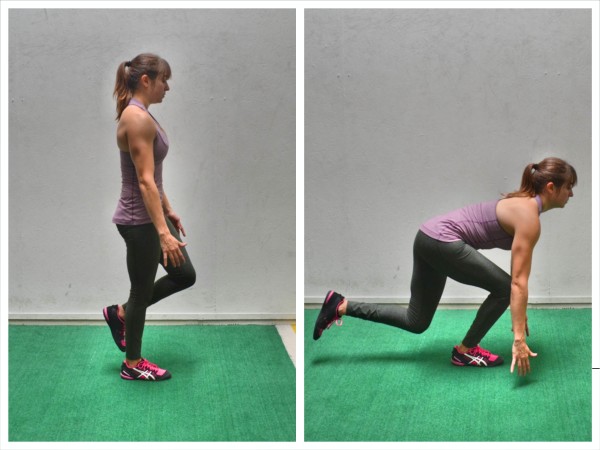
To do the 1/2 Squat, 1/2 Deadlift, start by standing on your right leg.
Then start to bend your right knee as you drive your left leg back and hinge over. Keep your back flat as you hinge over and sit your butt back. You are going to hinge over as you also squat down on your right leg.
Try to touch the ground without rounding your low back. Make sure to push your butt back as you sit back in your heel and squat down.
Once you’ve gone as low as you can, you will come back up to standing. Try not to touch your left toe down between reps.
Hinge back over, sitting your butt back as you bend your standing leg to squat down. Touch the ground and come back up. Go as low as you can each time. The more you bend your knee as you hinge over, the harder the move will be.
Slow down the tempo of this move to make it harder. Take 3-5 seconds to squat down and then quickly pop back up to standing. You can also add weight, but do not allow your back to round as you hold dumbbells in each hand.
Also, do not add weight if that means you can’t squat as low as you hinge over.
Glute Bridges – Because we sit all day with our hips in flexion, our hips can become underactive and weak, leading to hip, knee, and low back pain. That is why we need to include Glute Bridges in our workout routine.
Glute Bridges are a great hip hinge movement to help open up your hips and activate your glutes so you can move better, lift more and even run faster.
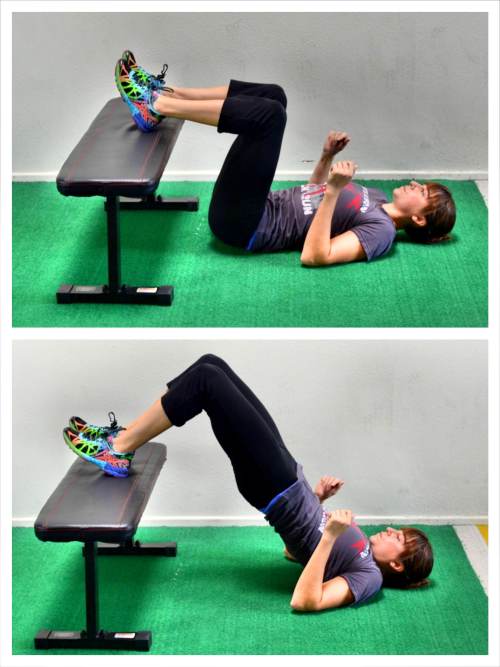
They can be included in your warm up for activation, as a big lift during your workouts, as a supplemental exercise after heavy lifts like the Deadlift or Squat or even in your recovery routines.
Actually throughout your workout program, they should make an appearance in all of those aspects!
For a variety of glute bridges you can use to meet any of those needs, check out these 20 Glute Bridge Variations.
Farmer’s Walk – Farmer’s Walks are one of the most functional moves for full-body strength out there. If you ever walk and carry any sort of load, you need to do the Farmer’s Walk.
The Farmer’s Walk is a great move to strengthen your legs because you must take powerful strides while holding a load. And while working your legs you will also improve your posture, grip and core strength.
Farmer’s Walks can be a great exercise to use at the end of your workout to burn out your legs.
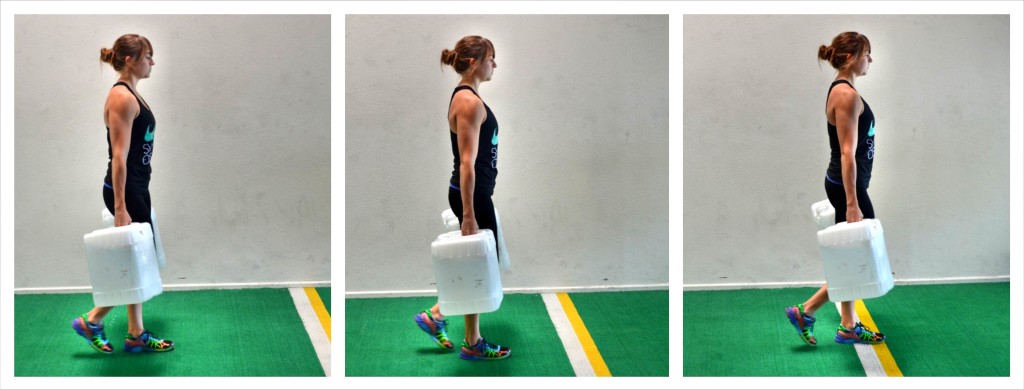
To do a Farmer’s Walk, you can hold dumbbells, kettlebells, water jugs or any sort of weights in each hand. Use as heavy a weight as you can grip while maintaining a nice tall posture.
Stand up nice and tall with your arms down by your sides and your chest pressed out. Make sure your core is braced so you don’t feel your low back engaging.
Holding the weights in each hand begin to walk forward, making sure the weights aren’t resting on your legs. Hold them just off your thighs.
Walk around for a set distance or an amount of time, maintaining perfect posture. You want to use weights that challenge you and make you want to drop them just before the time or distance is out.
Do not let your head jut forward or your shoulders round. Do not let the weights rest on your legs. Keep your core tight and glutes engaged as you walk with your shoulders down and back and your head up.
You can also do this with a unilateral load (aka a weight in one hand) if you want to make your core work to fight rotation more.
Step Ups/Step Downs – A safer way to strengthen your legs especially if you have knee pain, is the Step Up and variations of the move. Plus it is a super functional move since many of us walk up stairs or have to use step stools or ladders in our everyday lives.
If you do this move correctly, it is also a great way to strengthen your glutes. Step Up Variations can also force you to move in a few different planes of motion while making each leg work independently to correct imbalances.
Three variations of the Step Up that are important to include are:
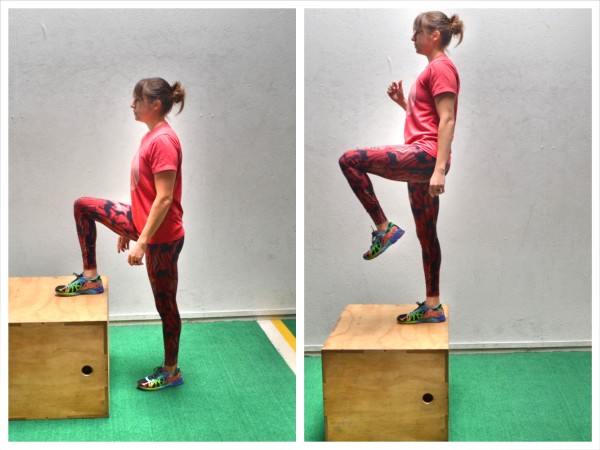
- The Basic Step Up – The higher the bench or box you use, the harder this move will be. Do not use a box that is too high. If you have to push off the foot on the ground or if you really lean forward to propel yourself up, the box is too high. Stand facing the box. Step your right foot up on top of the box. Drive up through the heel of the foot on the box until you are standing on the box. Drive the left knee up as you lift up onto the box. Then step back down and repeat. Keep your chest up as you drive up. Do not lean forward or let your heel on top of the box come up. Complete all reps on one side before switching. Challenge yourself first with a higher box and then with weight. If one box is too high and the other is too low, you can add weight and use the lower box to make the step ups harder.
- Rotational Step Up – The Rotational Step Up is a great move since we move in every plane of motion in everyday life. With this Step Up, your side will be to the box. You will then pivot as you step one foot on top of the box. As you step up, maintain a nice tall posture. You can either bring the other foot to the top of the box or drive the other knee up as you come to standing on the box. Make sure to drive through your heel on top of the box. Do not lean way forward or use your other foot to propel you up. To step back down, you will lower the leg not on top of the box and pivot as you bring the leg on top of the box down. Complete all reps on one side before switching.

- The Step Down – To do the Step Down, start standing on a bench, step or box so that you can step off of it to the side with your left foot. Your right foot will be near the edge of the bench or step. Then slowly begin to bend your right knee and lower your left foot down to the ground. As you bend your right knee, make sure to sit your butt back and hinge forward. Do not round your back as you hinge. Lower your left foot down as close to the ground as possible. Do not put the foot fully on the ground. You do not want to be able to push off the ground with your left foot to help yourself come back up to standing. Once you’ve lowered your left foot down as far as you can, drive through your right foot to come back up to standing. Feel your right glute working to push you back up to standing. If you feel this in your low back, do not go as deep in the Step Down. Also, make sure you are slightly back in your standing heel. You really want to load your glutes and not your knees with this movement. And because this move is very challenging for the balance, you may want something in front of you to help you balance or you may not want to go as low in the Step Down to start. Complete all reps on one side before switching. To make the move harder, get a higher step or box or add weight.
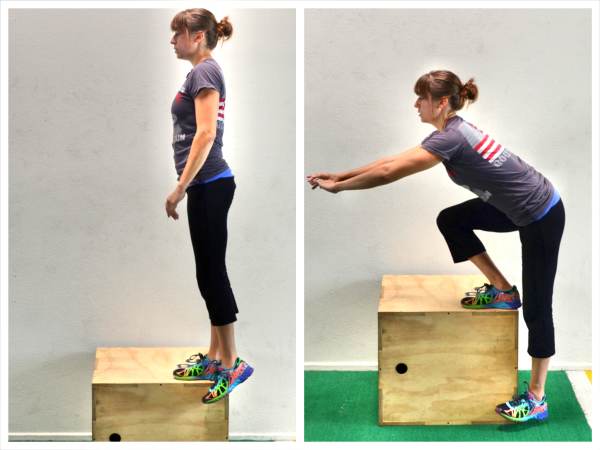
The Get Up Lunge – As we get older, it can be harder and harder to get up from sitting or kneeling on the ground. This is a great move to help us keep our legs and core strong so that we can always smoothly get up from the ground.

To do the Get Up Lunge, start standing with your feet together. Then sit your butt back and sink into a little squat.
Then lunge back to half kneeling on the ground. Keep your chest up as you half kneel down.
Lunge back on the other leg until you are fully kneeling on the ground. Keep your chest up and back flat as you come to kneeling.
Then step one foot forward to return to half kneeling before pushing back up into the little squat.
Repeat either lunging back with the same leg or by alternating sides.
To make this move harder, add a weight. Beginners may need to add a pad under their knees if they can’t get all the way down to the ground.
Make sure that even when you stand up, you don’t completely extend your legs. You want to stay in that little squat even at the top so your legs are working the entire time.
Unilateral Suitcase Deadlifts – When you pick up heavy bags or suitcases off the ground, you want to make sure that you aren’t going to get injured, especially since we are usually picking up awkward and uneven weights. Rarely are we picking up two suitcases or bags that weigh the exact same. Often, actually, we are even just picking up one bag on one side.
Which is why the Unilateral Suitcase Deadlift is such an important deadlift variation to include in your workouts. The Unilateral Suitcase Deadlift is a great way to strengthen your legs, core and back so that you can lift heavy bags from the ground without pain or injury.
This move is an anti-rotational move, which will strengthen your core to prevent low back injury while lifting uneven or awkward weights only on one side.
To do the Unilateral Suitcase Deadlift, you can use sandbags, kettlebells or dumbbells.
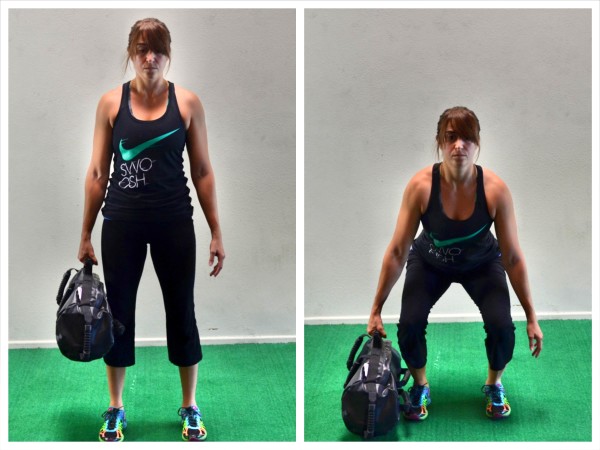
To do the Unilateral Deadlift with a sandbag, grab the sandbag in one hand and hold it at your side like a briefcase.
Stand nice and tall with your feet about hip-width to shoulder-width apart. Then, holding the sandbag at your side, sit your butt back and hinge over. Drop the sandbag to the ground while keeping your back flat.
Do not lean or rotate as you sink. You want the move to look like you are holding weights in both hands.
Driving through your heels, come back to standing. Squeeze your glutes at the top and then repeat. Do not let your back round as you lower down.
Make sure you don’t turn this into a straight leg deadlift as you hinge over and lower the weight down. You want to make sure to sit your butt back as you hinge over.
Once you’ve completed all reps on one side, switch the weight to the other hand.
If you feel yourself rotating, lower the weight. To advance the move, add more weight.
You can also make this an Unevenly Loaded Suitcase Deadlift, by holding two weights but a heavier one in one hand. You will still have to fight the urge to rotate, but you will be loaded down on both sides.
Kettlebell Swings – If you want to work on explosive hip power to help you improve your mind-body connection and your glute strength and power, you need to include Kettlebell Swings in your Functional Training Routine.
Kettlebell Swings works on the explosive hip movement we need to jump higher and even run faster. Even if those two things aren’t your goals, the coordination and mind-body connection you will gain from this movement, as well as the glute strength and power, are things that everyone needs for everyday life.
And the functional Swings we are discussing aren’t American Style Swings, but the Traditional Russian Swings focused on the hip hinge and not a squat or extension of the kettlebell overhead.
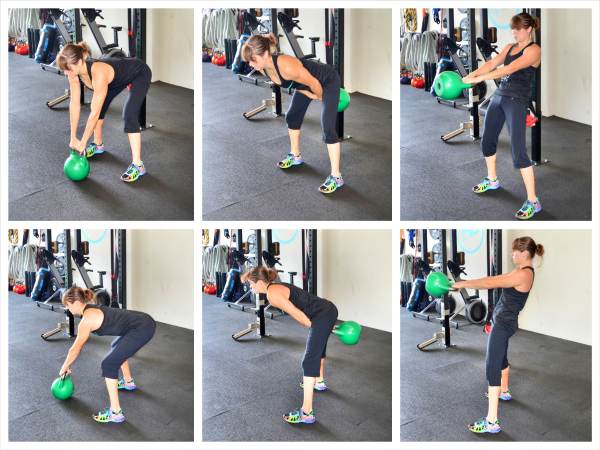
For tips on form and how to perform the hip hinge Kettlebell Swing, check out this guide to the Kettlebell Swing and Variations.
By adding in a few of these Functional Training Leg Exercises to your current workout routine, you can help develop functional leg strength and mobility in every plane of motion which will translate to feeling and moving better in everyday life!
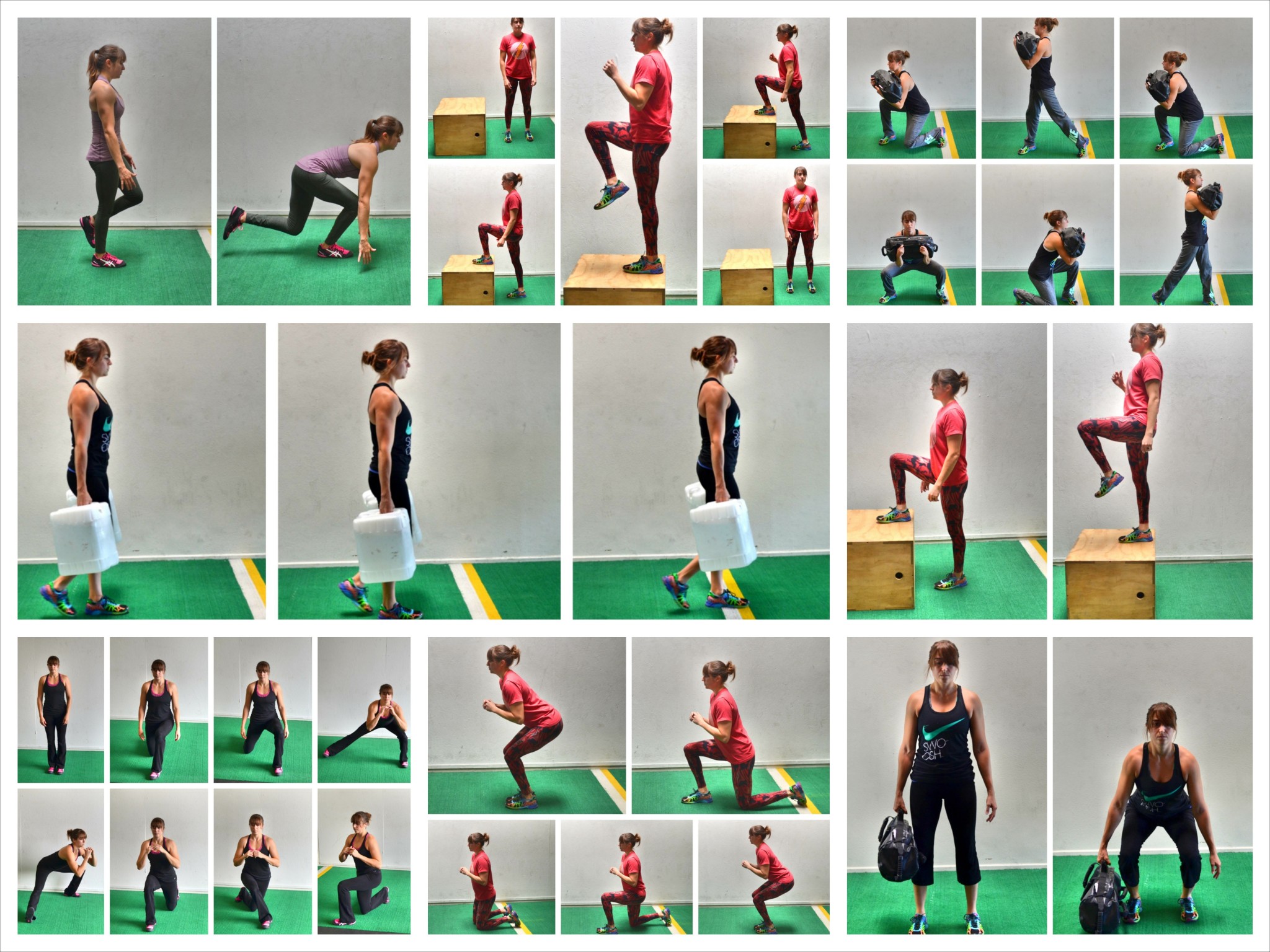
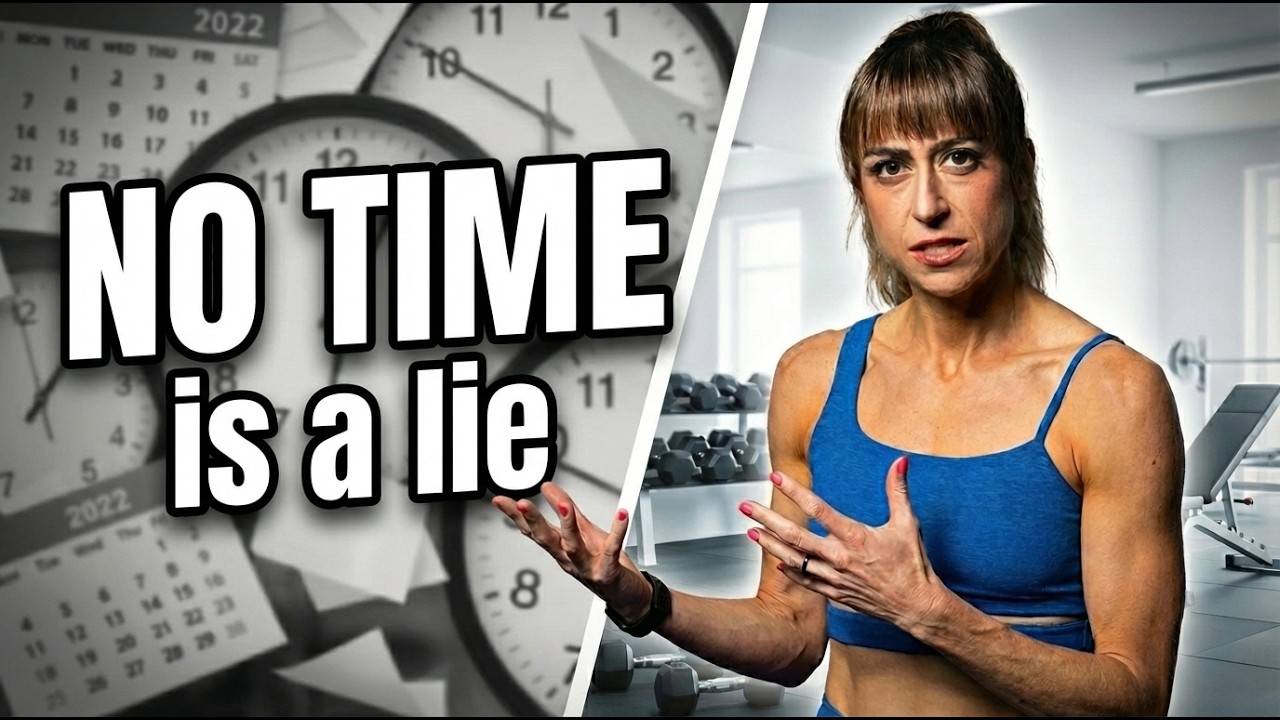
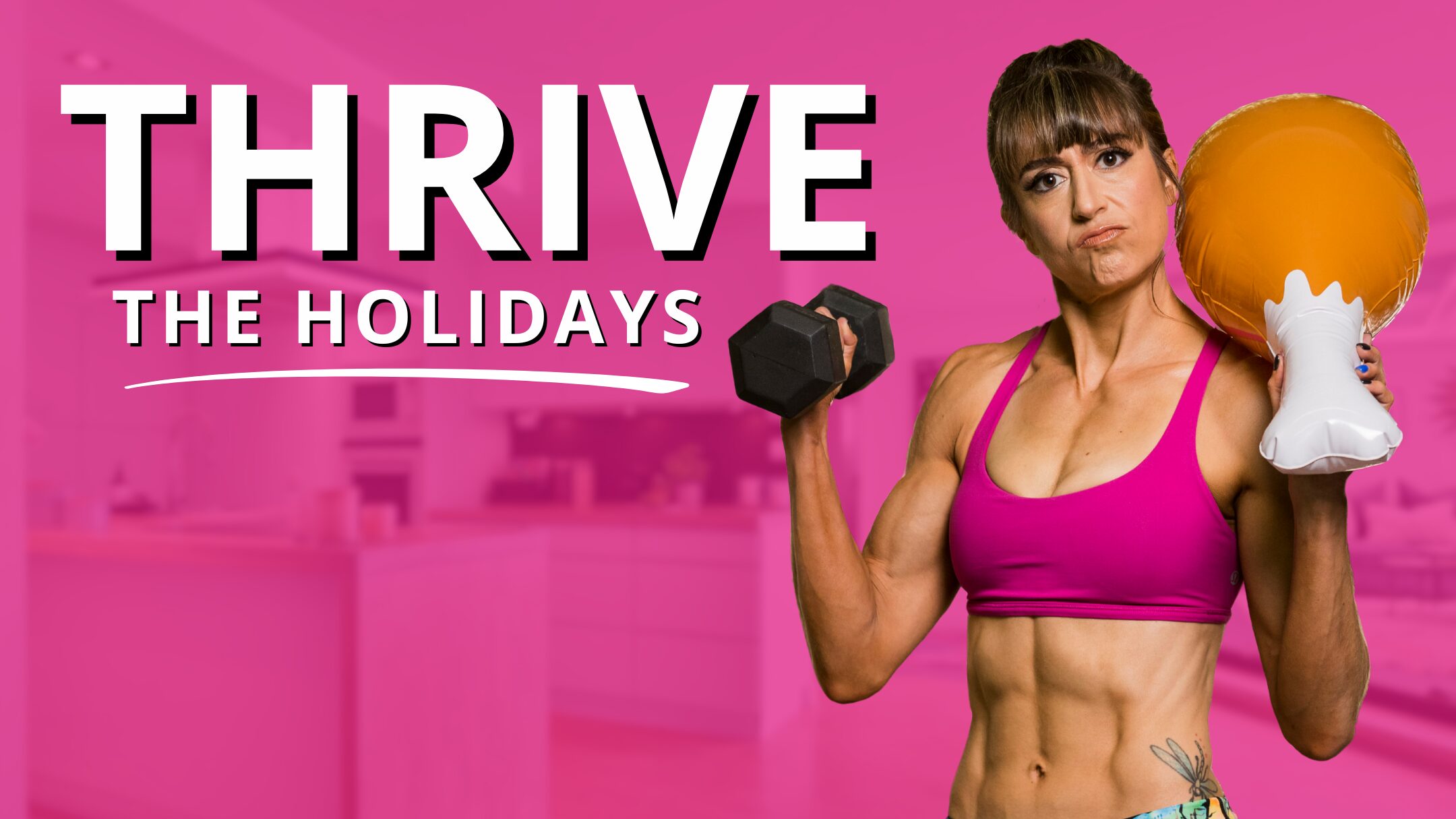
Can you put the 10 Functional Training Leg Exercises on You Tube? Much appreciated.
All of the moves are on my channel 🙂
Love the content, all these strength training are super effective on a busy life.
Thank you!